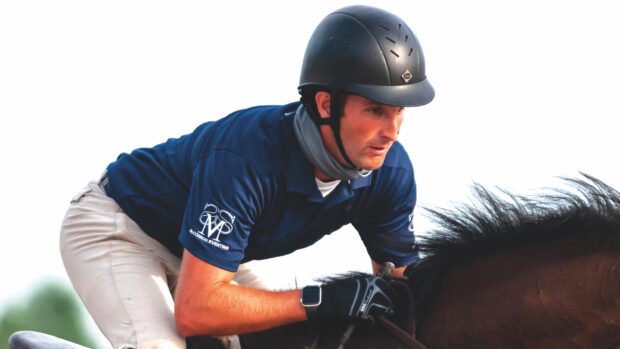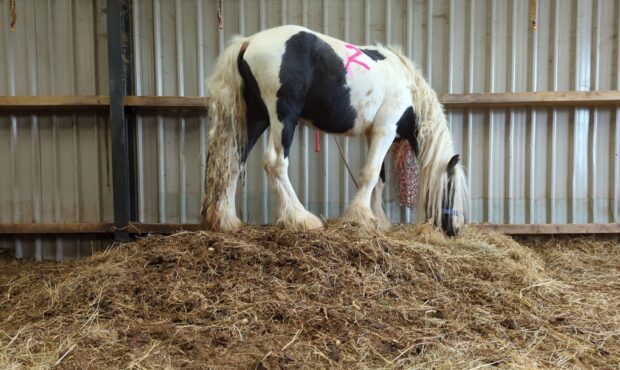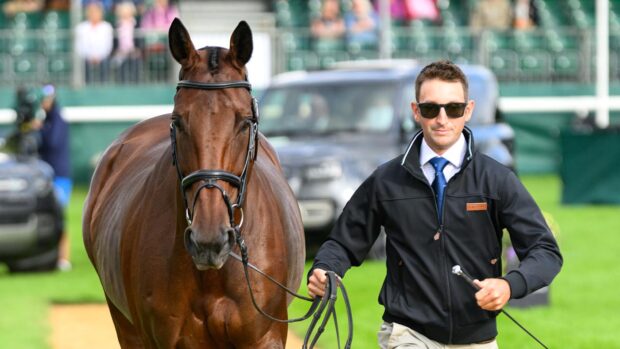Obstacle safety and ground conditions are the focus of “up-and-going” projects – as the racing and wider equestrian worlds are reminded that when it comes to horse welfare, “we are all in this together”.
The racing industry’s Horse Welfare Board(HWB) set out 26 projects at its launch in February 2020 (news, 27 February 2020). Its equine safety advisor Mike Etherington-Smith and aftercare lead Francesca Compostella shared the progress it is making and current projects it is focusing on, at the Horseracing Industry Conference in Newbury (30 June).
Obstacle (fences and hurdles) safety, ground and going conditions, plus a stalls and starting review are among the three projects that are under way.
“We are looking at obstacle improvement and development and what we can do in terms of profiles, materials, design and sighting. We’ve got some ideas on hurdles and moving those forward,” said Mike. “This is all about making it easier for horses to do what we are asking them to do.
“Whether it’s eventing, showjumping, racing or whatever, we all have a responsibility to do our best by horses. For me, equine safety is the number one priority. No horse, no sport. It’s as simple as that.”
Mike, a five-star eventing course-designer and a founder member of the FEI eventing risk management steering group, added that many principles from that area of his career “swing straight into racing”.
“We all got into this because we want to make a difference. It’s not necessarily because we feel hugely passionate about racing, which of course we do, really it’s about trying to make a difference and move things along,” he said.
“Our belief is we are all in this together. It goes beyond racing as well. The whole equestrian industry is in this together.”
He added that the board has been working with the British Horseracing Authority, National Trainers Federation, Professional Jockeys Association and Racecourse Association, because equine safety is “interlinked and interdependent” with so many areas.
“Working together, across the whole equestrian industry, for me is really important,” he said, adding that collective communication is key. “Joe Public sees us all as horse people. Racing is the biggest industry of all, but to a lot of people on the street, a horse is a horse.”
He added: “Quite often we look outside the sport, whereas actually we need to look at ourselves, and the biggest resistor to change comes from within: ‘It’s been done like this since God was a boy so we’re going to keep going with it’.
“We often need to look at ourselves first and foremost and I’m a great believer in challenging the status quo.”
Mike said getting multiple initiatives going consecutively is crucial to making change happen.
“If we just pick them off one at a time, we are going to be here forever. In five or 10 years’ time we are going to be wondering where that time has gone,” he said.
“Everybody on the welfare board is on board with this. It’s a case of ‘OK, how are we going to do this, how are we going to make a difference in a short period of time?’ Because we don’t have the luxury of time in any equestrian sport. A lot of stuff is coming our way, it’s already here – the emotion in continental Europe in eventing is coming here.”
Dr Compostella spoke of the progress being made in equine traceability and data.
“Traceability underpins everything that assures a horse’s safety throughout his life and the collective lifetime responsibility. We are very well versed in where horses are during racing, but we do have gaps – and we have to be honest about them – before and after their racing careers,” she said.
“To help with that, the HWB, with the Thoroughbred Breeders Association, is looking at an analysis of the foal crop between 2010, 2015 and 2018 to try to understand the different pathways of horses from when they are born to racing.”
She added that the HWB is working with Defra on the consultation phase of trying to move digital ID forwards, and with the Racehorse Owners Association on a responsible ownership campaign and updating equine ID throughout a horse’s life.
Progress is also being made on traceability as horses leave racing, with the expansion of the “previous safety net to include horses as they first step out of racing”.
“That led in itself to a national call, where we approached and engaged with all aftercare-service providers in the UK and that brought to life a pitch process, which by its nature has created the backbone of an accreditation system,” she said.
“In all that, a partnership with the University of Surrey has promised a welfare tool, which is being used in other areas as well, which will show different areas of a horse’s welfare throughout his rehoming stages and once he is rehomed to owners.
“There’s a big focus on creating and maintaining those connections we have established and in growing on them to create the stronger bond and community that will deliver on education, which we feel is the key to sustainability of the aftercare sector.”
You might also be interested in:

Subscribe to Horse & Hound magazine today – and enjoy unlimited website access all year round

‘A life well lived’: new welfare strategy to protect racehorses from birth to death

*Opinion* Love for the horse is our most powerful asset – we need to use it more

Disqualification for excessive whip use in racing could apply from autumn
Horse & Hound magazine, out every Thursday, is packed with all the latest news and reports, as well as interviews, specials, nostalgia, vet and training advice. Find how you can enjoy the magazine delivered to your door every week, plus options to upgrade your subscription to access our online service that brings you breaking news and reports as well as other benefits.




